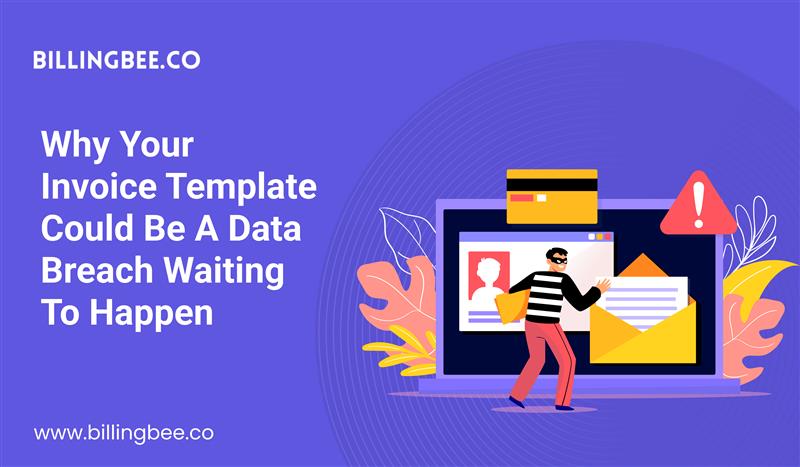Why Your Invoice Template Could Be a Data Breach Waiting to Happen




You don’t need to be a hacker to accidentally expose sensitive financial data.
In fact, if you're using a free invoice template downloaded from the internet—or even one you've been recycling for years—there's a good chance you're unknowingly walking a tightrope over a potential data breach.
It’s easy to assume that invoices are just harmless documents: a bit of branding, a breakdown of services, a total amount due. But look closer. Invoices contain email addresses, bank details, phone numbers, tax information, project specifics, and sometimes even internal conversations or hidden metadata you didn’t mean to share.
And if that data gets into the wrong hands, it could cost far more than a late payment.
The Hidden Threat Lurking in Your Invoice
You might think, “It’s just a PDF. What could go wrong?” But PDFs are more revealing than you think—especially when they’re created manually or with outdated tools. Here’s how your invoice could be leaking more than just numbers:
- Exposed Metadata: Word processors and PDF converters often embed author names, device info, and file history—without your knowledge.
- Editable Fields: Many free templates aren’t locked or secured, meaning clients (or unintended recipients) can alter values after receiving them.
- Auto-filled Account Info: Ever sent an invoice with your saved bank account information still present from another client? That’s a liability.
- Reused Links or QR Codes: Using the same links across multiple invoices? Anyone with access to one could test and uncover more.
- Cloud Storage Misconfigurations: Hosting your invoices on shared drives or public folders? Even a minor permissions error can expose every invoice you’ve ever sent.
Cybercriminals don’t always need to breach your servers—they just need you to send them the gold mine directly.
The Real Cost of a Compromised Invoice
Now imagine this: A client forwards your invoice to their finance team. Someone accidentally sends it to the wrong department, or worse, someone outside the company. That invoice contains your full name, email, bank account, and business address.
A week later, your account starts showing suspicious activity. Or perhaps a client receives a fake invoice—one that looks exactly like yours—but the bank details have been changed. You not only lose money, but your credibility takes a hit.
This happens. Every. Day.
What’s worse? Most freelancers and small business owners don’t even realize they’re the weakest link in their own cybersecurity.
You Need More Than a Template—You Need a Secure Invoicing System
Templates are quick. But they’re not smart. They don’t offer encryption, audit trails, or version control. They don’t notify you if a file has been accessed or altered. They don’t verify who’s received and opened the invoice.
BillingBee does.
BillingBee was designed with data security baked into every invoice you send. From secure cloud-based access to controlled editing, from bank detail masking to GDPR-compliant privacy protocols—we ensure that what you share is exactly what your client sees, nothing more, nothing less.
What Safe Invoicing Should Look Like
If you’re serious about protecting your business and your clients, here’s what you should demand from your invoicing tool:
- End-to-end encryption for all invoice data
- Secure client portals to avoid sending sensitive info via email
- Two-factor authentication for access
- Automatic redaction or masking of critical data when not needed
- Real-time delivery tracking to ensure the invoice goes to the right person
- Built-in anti-fraud detection if bank details are altered
Your Invoice Is More Than a Receipt—It’s a Target
The next time you attach that invoice to an email or share it via link, ask yourself:
“What if this fell into the wrong hands?”
If you’re unsure how secure your invoicing process is, it’s time to move away from downloadable templates and toward a smarter, safer solution.
Let your invoicing system be an asset—not a liability.